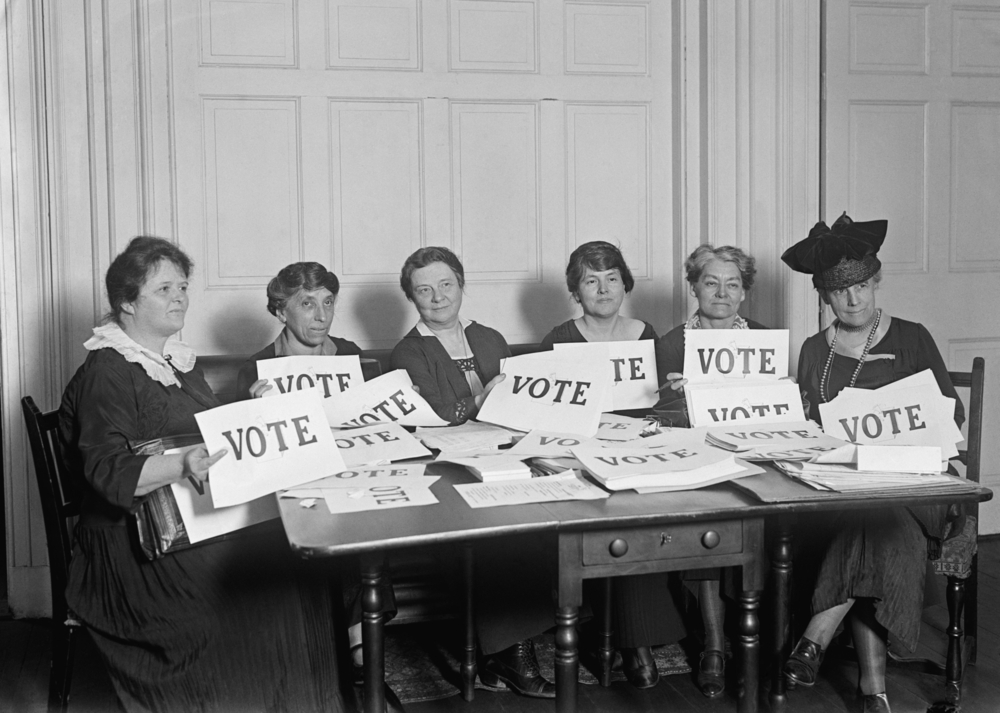How to cast your vote and make sure it counts
People fought and died for the right to vote. Nonetheless, in the 2016 election, four out of 10 eligible voters chose not to exercise this right.
I don’t get it. Are nonvoters too busy? Too apathetic? Too sure their votes won’t matter?
According to a recent Pew Research Center study, nonvoters had as much influence on the outcome of the 2016 election as voters did. In other words, nonvoters opened the door for the current administration to take hold of the White House.
If inaction has that much power, imagine how much power action could have.
Ready to exert your influence on our country’s direction? Here’s a quick tutorial on voting:
I know what you’re thinking: Is it really that easy? Pretty much. But if you want to dig a little deeper, check out these tips from seasoned voters:
1. Don’t forget to register.
Rules for voter registration vary by state. To vote in the November 6 election, you must register before your state’s deadline. Look up your state guidelines here. If your deadline has passed, don’t give up! Read the fine print. Many states offer options for registering after the deadline.
2. Double-check your registration status.
If want to verify your registration status, confirm that your registration information is up-to-date or check the location of your polling place. HeadCount provides links to state websites where you can find this information (if your state offers such services online).
3. Review your ballot before heading to the polls (sort of).
If you’ve registered in time, you will receive a sample ballot and a voter’s guide in the mail, at which point you’ll probably wonder, Who the hell has time to read these things? Very few voters, actually. So here are some shortcuts to voting smart:
- Divide and conquer. Find some like-minded folks and divide up the candidates and ballot measures amongst you. Each person can study up on her assigned issues and candidates and report her findings to the group.
- Consult your go-to organizations. Many political organizations issue endorsements for candidates and opinions on ballot measures. Which organizations support your values and beliefs? Consult their websites to see who and what they’re supporting.
- Pick and choose. If all that still sounds like too much work, vote only for (or against) the candidates and issues on which you have a strong opinion and/or well-informed position. It’s better to cast your vote on some things and leave others blank than to give up and not vote at all.
- A word of caution. Campaign advertisements often manipulate statistics, take quotations out of context, or just plain lie. If you feel strongly about an issue raised by a campaign advertisement, fact check it before you vote.
4. Vote.
Again, voting rules vary by state. Depending on your state, the options include voting in person, voting by mail, and even voting early. Here’s the skinny on each:
- Voting in person on election day. Nothing says “I’m exercising my rights” like standing in line on election day. Plus, when you vote in person, you get a cool “I voted” sticker. Before you head out to your polling place, check what your state requires for identification. Also, remember to bring your sample ballot or notes. Voting is an open-book test; cheat sheets are allowed in the booth.
- Voting by mail. Some states allow a vote-by-mail option for all elections. Other states allow voters to request a onetime absentee ballot prior to election day. If you plan to vote by mail, make sure your ballot is postmarked by your state’s deadline, and make sure you affix enough postage to your envelope.
- Voting early. Some states allow early voting. The New York Times has compiled a list of early voting rules by state.
5. Troubleshoot.
Don’t let anything stand in the way of your vote. Here’s what to do if you find yourself in any of the following scenarios:
- If you can’t get to the polls. Ask a friend, family, or neighbor for a ride. No one to call? Local organizations often coordinate rides to the polls for people who need them. Additionally, Lyft and Uber are offering free and reduced-rate rides to the polls.
- If you get turned away at the polls. If your name is not on the list of registered voters at your polling place, ask for a provisional ballot and a receipt. This will enable you to cast your vote, which will be counted as soon as it is validated.
- If you experience voter intimidation at the polls. Know your rights! Although the phrase voter intimidation might conjure up images of brass knuckles and thick-armed bullies, it’s not always that obvious. The American Civil Liberties Union (ACLU) has created a handy list of rules regulating what can and can’t happen at polling places. If you experience or witness violations of these rules, you can call the ACLU at 866-OUR-VOTE.
What has stopped you from voting in the past? Share why you will be sure to vote now!
Cheryl Dumesnil, ESME’s LGBTQ Resource Guide, is an author, educator, writing coach, all-around do-gooder, and one of two moms separately coparenting two amazing boys. You can follow her on Twitter at @cheryladumesnil.
Please feel free to contact us with any comments or questions.









